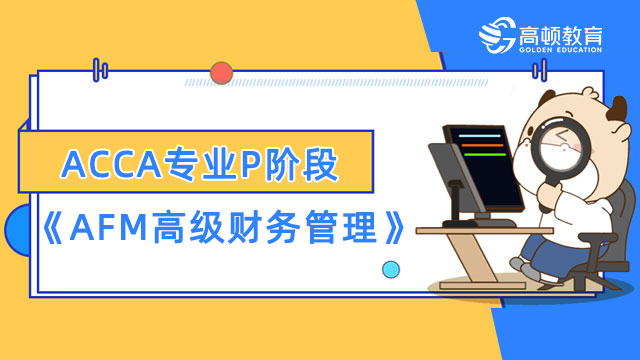ACCA《P7高级审计与认证业务》知识辅导3
来源:
高顿网校
2015-03-12
漫漫考试路,各位考生,您准备好了吗?如何快乐高效的学习?高顿网校为广大学员提供2015年ACCA考试网络课程,请各位考生紧跟网校名师的步伐尽快进入备考复习,让高顿与您共同努力,2015年考试顺利通过!祝您梦想成真!免费听课》
CONTINUE TO BE REST ASSURED
This article looks at the topic of assurance in the context of Paper P7, Advanced Audit and Assurance, describing a framework for the classification of assurance and non-assurance engagements, and giving guidance on the practical approach required when undertaking assurance assignments
Note: ISAE 3000, ISAE 3400, ISRS 4400, ISRS 4410 and ISRE 2400 are not examinable documents for Paper P7 UK and Ireland.
ASSURANCE ENGAGEMENTS
The glossary of terms published by the International Auditing and Assurance Standards Board (IAASB) describes an assurance engagement as:
‘An engagement in which a practitioner expresses a conclusion designed to enhance the degree of confidence of the intended users other than the responsible party about the outcome of the evaluation or measurement of a subject matter against criteria.’
IAASB AND THE ASSURANCE FRAMEWORK
The IAASB has developed the International Framework for Assurance Engagements in which it gives detailed guidance on assurance and non-assurance engagements. The structure and hierarchy of pronouncements are summarised at www.ifac.org in the IAASB handbook, which is freely available online. For Paper P7 purposes, a summary of the developing framework for assurance and non-assurance engagements is shown below:
ASSURANCE ENGAGEMENTS ON HISTORIC FINANCIAL INFORMATION
The first distinction to be made is to distinguish between the two types of assurance engagements on historic financial information that can be provided. The difference is the level of assurance provided on the historical information.
Reasonable assurance engagement This is a statutory audit, where the approach required will need to be consistent with local legislative requirements, such as the Companies Act 2006 in the UK, and audit work will need to be carried out in accordance with International Standards on Auditing (ISAs)。 The auditor will express a conclusion designed to enhance the degree of confidence of the intended users of the financial statements, and moderate to high assurance would normally be given.
Limited assurance engagement A limited assurance engagement is increasingly being seen as an alternative to the
statutory audit. A good example of this type of engagement is represented by recent
initiatives in the UK, which have proposed the introduction of ‘mini’ audits for
companies below the audit exemption threshold. There currently exists no UK
statutory requirement for a ‘mini’ audit, although an increasing number of companies
are requesting, on a voluntary basis, limited assurance engagements. Such
engagements do not give the same level of assurance as a statutory audit, but instead
give ‘negative assurance’ based on more limited procedures than are required with a
statutory audit. Negative assurance will typically be worded as follows:
‘Based on our review, nothing has come to our attention to indicate that the
accompanying financial statements contain material misstatement.’
With a negative assurance statement, effectively no opinion is given on the
information, but at least some assurance is provided that the information ‘appears
reasonable’。
ASSURANCE ENGAGEMENTS OTHER THAN AUDITS OR REVIEWS OF
HISTORICAL FINANCIAL INFORMATION
The International Standard on Assurance Engagements (ISAE) 3000 gives guidance
to practitioners (defined by ISAE 3000 as ‘professional accountants in public practice’)
for the performance of assurance engagements other than audits or reviews of
historical financial information. A summary of the key requirements of ISAE 3000 is
shown in the following table.
1
Ethical requirements – practitioners should comply with ethical
requirements (ie IESBA’s Code of Ethics for Professional Accountants and
ACCA’s Code of Ethics and Conduct)。
2
Quality control – the practitioner should implement quality control
procedures that are applicable to the individual engagement.
3
Engagement – the terms of the engagement should be recorded in an
engagement letter, and the practitioner should agree on the terms of the
engagement with the engaging party.
4
Planning and obtaining evidence – the practitioner should plan the
engagement so that it will be performed effectively, and should consider
materiality and assurance engagement risk, and sufficient appropriate
evidence should be obtained on which to base the conclusion.
5
Reporting – the assurance report should be in writing and should contain a
clear expression of the practitioner’s conclusion about the subject matter
information.
The approach required by ISAE 3000, and the work undertaken with an assurance engagement, may be similar in many respects to an audit engagement, although the context is different. For each of the assurance engagements on other information, the guidance from ISAE 3000 will apply, with the exception of Prospective Financial Information (PFI) work, where separate guidance is given in ISAE 3400, which is summarised later in this article.
Listed below are the most relevant areas where assurance engagements on other information will typically arise:
· Internal controls and systems reviews
· Due diligence reviews
· Prospective financial information.
Internal control and systems reviews The type of assurance work arising here is very similar to the work that auditors have been doing for a long time as part of the audit approach required when evaluating the effectiveness of internal control systems. Control and systems review work is tested in Paper F8 and, as such, needs little further coverage in this article.
Key performance indicators Developments in performance measurement have led to many companies publishing a selection of key performance indicators (KPIs) in the annual financial statements. KPIs represent a set of measures focusing on those aspects of performance that are most crucial for the continued success of an organisation. Many companies are increasingly opting for voluntary disclosure of KPIs, which can be financial (such as ratios based on the financial statements) or non-financial (such as targets on social and environmental matters)。 The increased tendency to disclose such data is often in response to shareholder expectations. The assurance approach towards KPIs requires careful consideration of how the KPI has been defined, the KPI calculation method, and the purpose of reporting the KPI, and the nature of evidence that would be available on the source of the underlying data.
Problems facing assurance providers in relation to KPI assessment may include the lack of precise definitions of KPI targets, lack of developed systems to capture KPI data, and the potential for KPIs, as disclosed, to be manipulated to achieve a desired result. However, an assurance report provided on the KPIs should add credibility to the published data if sufficient evidence is available to the assurance provider.
Due diligence reviews There is little specific guidance on due diligence reviews, despite this being an increasingly common form of assurance. Normally, the assurance provider is engaged by the potential acquirer of a company, who seeks to discover information about the target organisation. The assurance provider will attempt to verify any representations made by the management of the target company, and may also offer practical recommendations regarding the acquisition process.
Prospective financial information Procedures by assurance firms on prospective financial information (PFI) are well established, and separate guidance is given by the IAASB in ISAE 3400, The Examination of Prospective Financial Information, which again is very practical in nature. The standard defines PFI as ‘financial information based about events that may occur in the future and possible actions by an entity’。
The standard recognises that, because PFI relates to events and actions that have not yet occurred and may not occur, PFI work is highly subjective in its nature, and its preparation requires the exercise of considerable judgment.
ISAE 3400 requires that before accepting a PFI engagement, the terms of the engagement should be agreed on and sufficient knowledge of the business should be obtained. The period of time covered by the PFI should be clarified, which could be a forecast (usually a period of up to 12 months) and/or a projection (usually up to five years)。
ISAE 3400 also requires that written representations should be requested from management regarding the intended use of the PFI, the completeness of significant management assumptions, and also management’s acceptance of its responsibility for the PFI. The assurance report should make it clear that management is responsible for the PFI and also the assumptions on which it is based. Given the subjective and speculative nature of the PFI, an opinion cannot be given on whether the results shown in the report will be achieved, so only negative assurance can be given.
NON-ASSURANCE ENGAGEMENTS
Non-assurance engagements are more likely to arise with small companies, and only a general awareness will be required of the guidance given by the IAASB for each of these three areas. Each of the three so-called non-assurance areas is briefly summarised below.
Review engagements The objective of a review of financial statements is to enable an auditor to state whether, on the basis of procedures that do not provide all the evidence required in an audit, anything has come to the auditor’s attention that causes the auditor to believe that the financial statements are not prepared in accordance with the applicable financial reporting framework (ie negative assurance)。 Guidance to practitioners taking on this type of assignment is given by the IAASB in International Standard on Review Engagements (ISRE) 2400, Engagements to Review Historical Financial Statements.
Another type of review engagement is the review of interim financial information, covered by ISRE 2410, Review of Interim Financial Information Performed by the Independent Auditor of the Entity.
There are many similarities between review engagements and the limited assurance engagements (these were discussed earlier, in the context of so-called ‘mini’ or
voluntary audits)。 The best approach to adopt, however, is to consider the work required for the engagement itself, rather than to dwell on how the engagement is classified.
Agreed upon procedures The objective is for the auditor to carry out procedures of an audit nature to which the auditor, the entity, and any appropriate third parties have agreed, and for the auditor to report on factual findings. Guidance to practitioners taking on this type of assignment is given by the IAASB in International Standard on Related Services (ISRS) 4400,Engagements to Perform Agreed Upon Procedures Regarding Financial Information. Examples of this type of engagement could include the quantification of an insurance claim, or of the loss suffered due to a fraud. The specialist area of forensic accounting and auditing could be viewed as a specific type of agreed upon procedure engagement.
Compilation engagements The objective of a compilation engagement is for the practitioner to apply accounting and financial reporting expertise to assist management in the preparation and presentation of financial information in accordance with an applicable financial reporting framework based on information provided by management – and report in accordance with the requirements of ISRS 4410, Compilation Engagements. Thus, the practitioner’s report is not a vehicle to express an opinion or conclusion on the financial information in any form.
CONCLUSION
Students should expect to see assurance assignments other than reasonable assurance engagements appearing frequently in the Paper P7 exam. In other words, a question that is not based around a ‘traditional audit’, but is presented in the context – for example, of a due diligence engagement, a review of PFI, a review of KPIs, or a limited assurance engagement on historical information. Such a question could appear in Section A or B of the exam.
It is important that candidates appreciate the practical nature of these questions, which will require application of knowledge to the scenario. The requirement may ask the candidate to consider, for example:
· whether or not to accept the engagement
· matters to be discussed with the client post-acceptance
· methods of gathering sufficient and appropriate evidence
· the report to be provided.
Written by a member of the Paper P7 examining team
小编寄语:只要功夫深,铁杵磨成针,考试也是这样,只要够努力,功到自然成。
| ACCA网络课程 | 课程专业名称 | 讲师 | 试听 |
 85%的人正在学习该课程 85%的人正在学习该课程 | ACCA 全维度网课体验课程 实景课堂与独立录制 覆盖所有知识点,根据学习计划推进学习进度 | 高顿名师 |  |
 70%的人正在学习该课程 70%的人正在学习该课程 | ACCA网课全科卡(8.2折) 为零基础刚开始学习ACCA的学员特别定制 | 高顿名师 |  |
精彩推荐:
版权声明:本条内容自发布之日起,有效期为一个月。凡本网站注明“来源高顿教育”或“来源高顿网校”或“来源高顿”的所有作品,均为本网站合法拥有版权的作品,未经本网站授权,任何媒体、网站、个人不得转载、链接、转帖或以其他方式使用。
经本网站合法授权的,应在授权范围内使用,且使用时必须注明“来源高顿教育”或“来源高顿网校”或“来源高顿”,并不得对作品中出现的“高顿”字样进行删减、替换等。违反上述声明者,本网站将依法追究其法律责任。
本网站的部分资料转载自互联网,均尽力标明作者和出处。本网站转载的目的在于传递更多信息,并不意味着赞同其观点或证实其描述,本网站不对其真实性负责。
如您认为本网站刊载作品涉及版权等问题,请与本网站联系(邮箱fawu@gaodun.com,电话:021-31587497),本网站核实确认后会尽快予以处理。
点一下领资料
【整理版】ACCA各科目历年真题
真题高频考点,刷题全靠这份资料
下载合集
acca全科学习思维导图
梳理核心考点,一图看懂全部章节
下载合集
2023年acca考纲解析
覆盖科目重难点,备考按照计划走
下载合集
acca备考 热门问题解答
- acca考试怎么搭配科目?
-
建议优先选择相关联的科目进行搭配报考,这样可以提高备考效率,减轻备考压力,1、F1-F4:为随时机考科目,难度较低,这里可以自行随意选择考试顺序。2、F5-F9:如果你的工作的和财务会计或者审计有关、或者你比较擅长财务和审计的话,推荐先考F7和F8。你可以选择一起考ACCA考试科目F7和F8或者先考F7(8)再考F8(7),这就要取决你一次想考几门。3、P阶段:选修科目中,建议企业首选AFM!第二部分科目进行选择,如果AA和SBR掌握学生更好,可以通过选择AAA,如果SBL掌握的好,可以自己选择APM。
- acca一共几门几年考完?
-
acca一共有15门考试科目,其中有必修科目和选修科目,考生需要考完13门科目才能拿下证书。
- acca一年考几次?
-
acca一年有4次考试,分别是3月、6月、9月和12月,分季机考科目是采取的这类四个考季的模式,而随时机考则是没有这方面的时间规定限制,可以随报随考。
- acca的含金量如何?
-
ACCA证书的含金量是比较高的,从就业、能力提升、全球认可等角度来说,都是比较有优势的证书,其含金量主要表现在以下几个方面:1、国际化,认可度高;2、岗位多,就业前景好;3、缺口大,人才激励。
严选名师 全流程服务
其他人还搜了
热门推荐
-
acca专业阶段考试科目有哪些?究竟都考些什么? 2023-04-23
-
accaP阶段科目考完需要多久?速戳了解! 2023-03-28
-
ACCA高级课程是哪几门?和基础课程比难度怎么样? 2023-03-17
-
sbr和sbl哪个难?accaP阶段先考哪个? 2023-03-16
-
accaP阶段报名费是多少?一文介绍全了! 2023-03-14
-
accaP阶段有哪些科目?各科目详细介绍! 2023-03-14
-
accap阶段考试顺序是怎样的?选修科目怎么选? 2023-03-10
-
acca考试科目:《ATX高级税务》重点详解! 2023-03-06
-
acca考试科目:《APM高级业绩管理》重点详解! 2023-03-06
-
acca考试科目:《AFM高级财务管理》重点详解! 2023-03-06
-
accap阶段有效期是多久?需要几年内考完? 2023-03-01
-
accaP阶段选修选哪两门?各科难度对比来了! 2023-02-28
-
2023年acca的sbl怎么学?点击查收备考攻略! 2023-02-24
-
acca考试p阶段科目题型,附各科分值参考! 2023-02-23
-
accap阶段要考几门?重难点是什么? 2023-02-10
-
accap阶段要考几门?重难点是什么? 2023-02-10
-
accaP阶段科目怎么搭配?先考哪门? 2023-02-09
-
ACCA专业P阶段:《AFM高级财务管理》复习攻略 2023-01-30
-
accap阶段选哪两门?考试重难点介绍! 2023-01-17
-
acca考试科目:《AAA高级审计与鉴证》题型及重点! 2023-01-17
-
acca专业阶段考试难度分析,选修科目报考指南来了! 2023-01-12
-
accap阶段报考顺序推荐,先报哪个好? 2022-12-15
-
ACCAp阶段一次最多考几门?成绩有效期是多久? 2022-08-24
-
ACCA的p阶段需要备考多久才够?考试难度怎么样? 2022-08-18
-
ACCAp阶段考试需要考几门?考试时间是哪天? 2022-08-15
-
ACCA考试P阶段考几门?P阶段成绩有效期是多久? 2022-08-12
-
ACCAP阶段科目难度高吗?P阶段是机考吗? 2022-08-10
-
ACCA最后四门难考吗?通过率怎么样? 2022-07-19
-
ACCA英语不好怎么办?怎么提高英语? 2022-07-14
-
ACCA机考报名时间是什么时候?怎么报考? 2022-07-14
 更多服务
更多服务









































